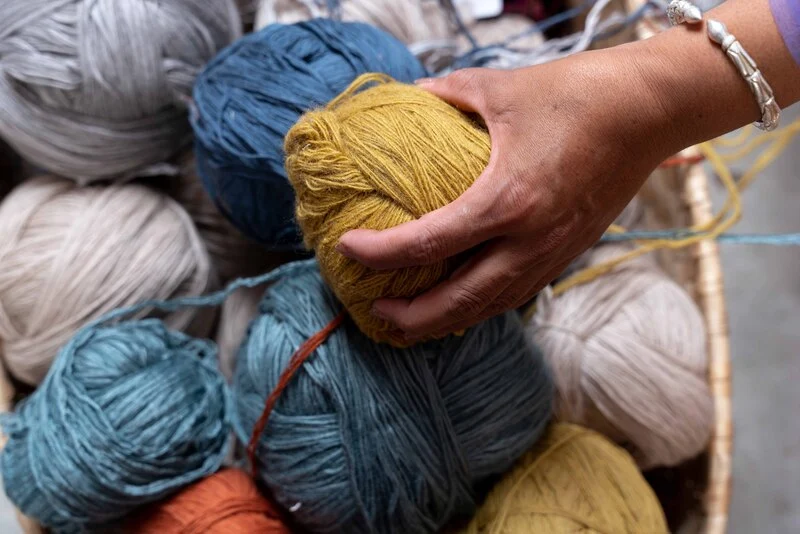Color is more than just appearance in rug-making — it’s emotion, identity, and art. At NP Rugs, every hue tells a story, and it all begins in our natural dyeing studio, where tradition meets science under the steady hand of a master dyer.
In this article, we take you behind the scenes of NP Rugs’ natural dyeing process — from sourcing botanical ingredients to achieving perfect shades — and why this stage plays a crucial role in crafting rugs that last generations.
What Is Natural Dyeing and Why Does It Matter?
Natural dyeing is the process of using plant-based, mineral, or insect-derived materials to color yarns. Unlike synthetic dyes, which are chemically manufactured, natural dyes are made from ingredients like:
- Madder root (red tones)
- Indigo leaves (blue shades)
- Walnut husks (rich browns)
- Pomegranate rinds (warm yellows)
At NP Rugs, natural dyeing is more than a technique — it’s a commitment to eco-friendly production, cultural heritage, and distinct visual texture.
Did you know? Natural dyes produce colors that age beautifully over time, unlike synthetic dyes which often fade harshly.
Inside NP Rugs’ Dyeing Studio: Step-by-Step Process
Our dyeing studio is a space of precision and patience. Here’s how the magic happens:
1. Material Preparation
Raw wool is cleaned and hand-spun before entering the dye studio. Clean fibers absorb dye more evenly, ensuring consistency.
2. Dye Bath Creation
The Dye Master prepares vats using exact measurements of natural ingredients, following time-tested recipes passed down through generations.
“Even 1°C difference in water temperature can change the final color,” says our Head Dye Master, illustrating the attention to detail in each batch.
3. Immersion & Stirring
Yarns are submerged and stirred manually. This can take anywhere from 30 minutes to several hours, depending on the color depth required.
4. Drying in Open Air
Dyed yarns are sun-dried on wooden racks — a process that gives each thread a naturally variegated tone, often sought after by designers.
The Role of the Dye Master: A Living Archive of Color Knowledge
Our Dye Masters aren’t just skilled artisans — they are living archives of natural color knowledge. With decades of hands-on experience, they make intuitive decisions about:
- Adjusting pH levels using lemon juice or ash
- Modifying water hardness for brighter tones
- Re-dyeing batches for tonal harmony in large rugs
This human expertise cannot be replicated by machines. As explored in Meet the Artisans of NP Rugs, every rug carries the fingerprint of its maker — and the Dye Master plays a leading role.
Sustainability in Action: The Eco-Value of Natural Dyes
Natural dyeing supports slow, sustainable manufacturing. Here’s how:
| Benefit | Description |
| Low Environmental Impact | No toxic chemicals, zero microplastic pollution |
| Water Reuse | Dyebaths are reused multiple times to reduce waste |
| Biodegradable | Waste products like leaves or bark are composted |
| Long-Term Color Retention | Naturally dyed rugs fade gracefully, not harshly |
A 2021 report by the Textile Exchange noted that switching to natural dyes can reduce water pollution by up to 90% in textile processes — reinforcing NP Rugs’ environmental ethos.
The Dyeing Process & Rug Quality: Why Color Comes First
Color is not an afterthought at NP Rugs — it’s built into the manufacturing journey from the start. Once dyed, yarns head straight to the loom setup phase, where artisans begin translating design graphs into knots.
Each color must be:
- Stable (won’t bleed during washing)
- Accurate (matches the designer’s prototype)
- Consistent (so the final rug has uniform shading)
A single mismatch in dye tone could throw off the weaving precision and overall harmony of the rug — proving that the dye studio sets the tone (literally) for everything that follows.
Balancing Tradition with Innovation
While the natural dyeing process is rooted in centuries-old practices, NP Rugs enhances it with modern insights:
- Colorfastness testing using digital tools
- Controlled dye lot logs to maintain consistency across large orders
- Data feedback from QA processes used to tweak recipes for future projects
This balance of human skill and modern data is also seen in our broader approach to weaving intelligence.
Final Thoughts: A Rug’s Soul Begins in the Dye Studio
When customers ask what makes NP Rugs so unique, the answer often lies in the subtle things: a hint of sun-faded indigo, the soft warmth of turmeric yellow, the way the colors seem to move under natural light. These are not accidents — they are the result of a Dye Master’s trained eye and steady hand.
By preserving ancient dyeing techniques while embracing sustainable, scalable systems, NP Rugs ensures that every rug is not only a beautiful product — but a living story of craft, care, and color.
Explore More from NP Rugs:
- How Rugs Are Made: A Look Inside NP Rugs’ Manufacturing Process
- Rug Making Timelines Explained
- Why Rug Loom Setup Determines Quality
- Inside the Washing & Finishing Rooms at NP Rugs
- Rug Prototypes & Sampling: How NP Rugs Collaborates with Designers
- Weaving Intelligence: Balancing Tradition & Modern Production

